|
Valentine’s Day is fast approaching, and I’m avoiding the commercialism that comes with it. While some may be rushing to buy flowers, candy, sparkling wine, or rosé to commemorate this day, I’m opening a bottle of sherry and pairing it with a shrimp and bean stew! Yes, that’s right…Sherry! Sherry is known for its aromatic, salty, and nutty profile and styles runs from dry to sweet, although the majority of sherry produced is dry. With many styles to choose from, one can find the perfect sherry to accompany any occasion. Here is a condensed description of sherry from previous articles I’ve written. Sherry is a fortified wine produced in Andalucía, located in the southwest area of Spain. With over 40,000 hectares of vineyards in Andalucía, over half of the wine produced here is in DO (denomination de origin) areas. Sherry can only be made from Palomino, Muscatel, and Pedro Ximénez white grapes. All sherry is aged for a minimum of three years and in old sherry casks using the Solera system. The Solera system is an aging process that uses new batches of sherry mixed with older ones in a tiered or pyramid structure. The bottom tier is the solera, the eldest sherry, which never entirely leaves the system. The rows above contain the younger sherries (criadera). Once a portion of the wine is extracted from the solera, it is replaced with the same amount of wine from the first criadera and so on, creating a unique complexity and personality in the wine. Because sherry is a blend of different vintages, it is impossible to give an exact age of a wine aged in a solera. So it is possible to drink a sherry containing anywhere from 3 to 100 vintages! Styles of Sherry Fino de Jerez is the youngest (usually 3-5 years old) and the driest of sherries. The wine ages under a layer of flor (yeast). This layer of flor protects the wine from being oxidized and consumes all the sugar in the wine, creating a dry sherry. Fino only comes from Jerez and El Puerto de Santa Maria. Manzanilla is another dry sherry that is just like Fino, except that Manzanilla comes only from the coastal town of Sanlúcar. Both Fino and Manzanilla have more wine salinity than the other styles. They will complement fish and shellfish. Amontillado is an aged Fino or Manzanilla. Once the layer of flor fades, the wine begins to oxidize and takes on a new character. It can be fortified up to 18%. The color is darker and less briny but nuttier and richer on the palate. These wines pair well with white meat and game. Palo Cortado is an interesting sherry that begins as a Fino or Manzanilla, but for no known reason, it unexpectedly loses its layer of flor too soon. Once the flor dies, the wine takes on oxygen and requires further fortification. In other words, it does “its own thing”. This wine has richness and is crisp as well. Oloroso (‘scented’ in Spanish) intentionally never develops flor. Aging through oxidation for up to 40+ years produces a full-bodied, aromatic, dark, and rich wine. Oloroso contains the most amount of alcohol in sherry with levels of 18% to 20%. This is an excellent wine for hearty entrees, meats and stews. Pedro Ximenez (PX) is an intensely sweet wine and the sweetest sherry. The grapes are dried in the sun, allowing the juices to concentrate before pressing. This is a rich wine that oozes raisins, nuts, and fig. Cream Sherry is usually a blend of Oloroso, PX, or Moscatel but can come in a various styles. This is semi-sweet wine is aromatic and dark in color with classic notes of nuts and caramel. La Gitana Manzanilla Sherry Bodegas HIDALGO LA GITANA located in Sanlúcar de Barrameda, was founded in 1792 by Don José Pantaleón Hidalgo when he bought a small storage warehouse from Don Roque Vejarano and renovated it into a winery. Since then, the business has passed from father to son through the generations. During the 19th century, the company became one of the world’s most important producers of Manzanilla. The winery’s name refers to its flagship product, "Manzanilla LA GITANA,” and it is the most popular Manzanilla in both the national and international markets. The winery uses grapes from its own vineyards in the Balbaina and Miraflores estates, which is considered the most respected and best in the area. They grow three grape varieties: Palomino, Pedro Ximénez, and Moscatel. And three-quarters of the winery’s production is Manzanilla wine. The grape for this wine is Palomino fino. Nose: Granny apples, nutty, floral, and a hint of lemon. Palate: Dry and crisp with almonds, apples, and a touch of yeast. I love the salinity and tanginess! Alcohol: 15% Pairing suggestions: Enjoy as an aperitif or with seafood, sushi, smoked salmon, white meat, or salads. I paired this sherry with a shrimp, white bean, orzo, and arugula stew. Shake up your Valentine’s Day with something different and delicious!
Until next time… Cheers! Penina To leave a comment or if you have an inquiry, please contact me at [email protected] March 1st began “Women’s History Month.” And throughout the month, women worldwide are acknowledged for their achievements and contributions. Over the past few years, I have written articles about Women’s History Month, giving shout-outs to women in the wine and spirits industry. However, I never wait for March 1st to come around; I like to keep the acknowledgments going all year long! At the risk of being repetitive, here is a quote from one of my previous articles. “Taking only one month a year to celebrate women is not acceptable. However, if during the next 31 days we succeed in sharing enough stories, perhaps it will inspire and encourage younger generations that they too can overcome obstacles and aspire to become whoever and whatever they want to be.” Many of these stories also encourage others that it is never too late to change paths, no matter your age or circumstance. Within the global wine and spirits community, many women have broken barriers and stepped into roles that men once dominated. Female winery owners, winemakers, sommeliers, and wine educators are no longer the “exception,” and female distillers and master blenders are on the rise! The list of accomplished women is lengthy and impressive! Here are just a few examples of women who have helped pave the way for others. Claudia Harris of England was the first female in the world to pass the rigorous Court of Master Sommeliers exam and receive a title in 1984. Madame Clicquot (Barbe-Nicole Ponsardin) became the proprietor of the famous champagne house in 1772, transforming it into an iconic winery, Veuve Clicquot, that earned her the title “Grande Dame of Champagne.” In 1997, Joy Spence of Appleton Estate Jamaica Rum became the first woman in the spirits industry to hold the title of master blender. Heather Nelson is the first woman to found a whisky distillery in Scotland in over 200 years. She opened Toulvaddie Distillery Ltd. in 2015. Susana Balbo became Argentina’s first female oenologist in 1981, undaunted by a male-centric arena. Hanna Weinberger became California’s first female winemaker in Napa Valley in the 1880s. The list is endless, and I’m so thankful for these women, past and present. Here are five more women that deserve a shout-out! Ntsiki Biyela Ntsiki Biyela is one of South Africa’s exemplary and highly respected winemakers. Ntsiki grew up in Mahlabathini, a rural village in KwaZulu-Natal. A few years after completing high school, she was awarded a scholarship in 1996 to study winemaking at Stellenbosch University. After graduating in 2003 with a degree in Viticulture and Oenology, she began her journey as a winemaker, starting with Stellekaya winery. Ntsiki’s dream and ultimate goal were to create her own wines and make exceptional world-class brands. So, influenced by her grandmother, who was her “guiding light,” Ntsiki took the initiative and established Aslina Wines in 2016, naming it in honor of her grandmother. Her winemaking philosophy is partly drawn on earlier harvest experiences in Tuscany and Bordeaux that reconnected her to her love of nature and the soil where she grew up. In addition to award-winning wines that Ntsiki produces, she sits on the board of directors for the Pinotage Youth Development Academy that provides technical training and personal development for young South Africans in the Cape Winelands, which prepares them to work in the wine and tourism industries. She was voted Woman Winemaker of the Year in 2009, and in 2017 she was listed in the world’s top 10 most “Innovative Women in Food & Drink" by Fortune’s Food & Wine. Ntsiki’s awards are numerous, acknowledging her role in paving the way for others, eliminating barriers, and her positive influence on the image of the South African wine industry. Aslina Sauvignon Blanc 2021 The grapes for this 100% Sauvignon blanc are sourced from the Stellenbosch region of South Africa and sustainably farmed. Nose and Palate: Aromas of citrus, minerality, and tropical fruit segue onto the palate with excellent texture, depth, and acidity. A hint of citrus zest lingers on a smooth finish. Alcohol: 13.3% SRP: $19.99 Pairing: Enjoy as an aperitif or serve with goat cheese, seafood, light pasta, or risotto. Natalie Christensen Natalie joined New Zealand’s Yealands Wines team in 2015 and has been this winery’s Chief Winemaker since 2018. She was also named as one of the World’s Most Influential Women In Wine by The DrinksBusiness in 2018! However, this native-born New Zealander’s journey to this impressive point didn’t start with wine; it began with a BA in classical music and a masters in psychology. Realizing she wanted more out of life, at the age of 25, Natalie interned at a winery where it all fell into place for her. She went on to get a degree in Oenology and took part in harvests around the world that eventually brought her back to New Zealand. Restless in between harvests and needing something to do, Natalie applied for a job as a winemaker in Spain, got the job, and experienced a fast immersion into making wine for an Albariño producer. Her tenacity, love of adventure, and passion shine through in her award-winning wines. Natalie says, “There is a strong link between music and wine. Everyone in a room can be listening to a piece of music, and each individual will have a completely different experience. It’s the same with wine. Although a group may share a bottle of wine, their experience will be their own, unique discovery.” Natalie pays it forward and mentors up-and-coming women in the wine industry as part of the New Zealand Winegrowers Women In Wine mentoring program. Yealands Estate Single Block S1 Sauvignon Blanc 2020 The vineyard for this 100% Sauvignon Blanc is located in Awatere Valley in the Marlborough Appellation of New Zealand. It is the southernmost, coolest. and driest of Marlborough’s growing regions. Yealands is one of only a handful of wineries worldwide to be certified as carbon neutral and the first-ever to be certified from inception. Nose & Palate: Lovely aromas of ripe stone fruit, citrus, and tropical notes. The palate offers exotic fruit, hints of lime, pineapple, good acidity, and flinty minerality. Alcohol: 13.5% SRP: $30 Pairing: Enjoy as an aperitif or serve with shellfish, light pasta dishes, grilled chicken, or halibut. Bruna Giacosa Bruna is a fourth-generation winemaker who, in 2004, took over one of the most celebrated wineries in Italy, the iconic Bruno Giacosa winery in Piedmont, Italy. It was formerly headed by her world-renowned father, Bruno Giacosa, who sadly passed away in 2018. Bruna began her passage into the world of wine at the age of eight while working alongside her father, and now she is an amazing force and the heart of the winery. She is responsible for the business and winery management and represents the brand throughout the global wine markets. Bruna inherited her father’s passion and enthusiasm for making great wine, always looking for perfection and upholding his philosophy of respecting traditional techniques while embracing the best of modern technology. As a result, she continuously seeks improvement of the wines while maintaining the highest standards in winemaking. And indeed, Bruno Giacosa Barolo and Barbaresco wines remain legendary, with each vineyard site producing unique and eloquent wines. Bruna is making sure that her father’s legacy continues for generations. Falletto di Bruno Giacosa Barbaresco Asili 2017 DOCG “The 2017 vintage will be a year to remember for the challenges that growers faced from Mother Nature, namely hot weather and very little rain. Surprisingly, the wines produced do not show any notes of over-ripeness commonly found in a hot year. This balance in the wines is attributed to the stark temperature swings with cool summer nights tempering the hot days. The Barbaresco is fruit-driven with good acidity.” Bruno Giacosa Winery. The grapes for this 100% Nebbiolo are sourced from Asili (Village of Barbaresco). The wine is aged 18 months in French oak and six months in bottle. wine photo Nose & Palate: Beautiful aromas of rose petals, red berries, and cherries set the stage for a rich palate of raspberry, minerality, racy acidity, silky tannins, and spice on the finish. It is a beautiful wine with depth and character that will only improve with age. Drink through 2035. Alcohol: 14.5% SRP: $285 Pairing: Pair with hearty stews, grilled meat, seared tuna, or aged cheese. Paola Medina Sheldon Paola is technical director and winemaker for Bodegas Williams & Humbert, located in the heart of Jerez de la Frontera, Spain. She is second-generation of the Medina family who took full ownership of this 130-year-old historic winery in 2013. The winery is noted for its production of sherries and brandies. And, it is no surprise that Paola, who grew up in this environment rich with family heritage and connections, would one day become a winemaker. Her path began with a degree in chemistry from the University of Granada, a degree in oenology from the University of Cadiz, and a master’s degree in viticulture, oenology, and legislation from the Polytechnic University of Madrid. Paola worked in wineries in various capacities before joining Bodegas Williams & Humbert in 2010. She has become part of the “sherry revolution” and is an expert Sherry winemaker, throwing her passion and knowledge into the production. Paola was highlighted by Decanter in 2018 as one of the ten most influential and pioneering winemakers in Spain, pointing out “her innovative production of vintages with biological aging, and the necessity to focus on quality wines and integrate sherry into haute cuisine.” In addition to winemaking, Paola regularly conducts and participates in winemaking courses and seminars within Spain and abroad. Bodegas Williams & Humbert Dry Sack 15 Year Solera Especial This fortified wine is a blend of 78% Dry Oloroso and 22% Pedro Jimenez Sherries. Aged for a minimum of 15 years, each Sherry style is first aged in its own Solera system and then blended in a third Solera. The Solera system is an aging process that uses new batches of sherry mixed with older ones in a tiered or pyramid structure. The bottom tier is the solera, the eldest sherry, which never entirely leaves the system. The rows above contain the younger sherries (criadera). Once a portion of the wine is extracted from the solera, it is replaced with the same amount of wine from the first criadera and so on, creating a unique complexity and personality in the wine. Nose & Palate: Beautiful notes of fig, toasted nuts, raisins, and vanilla, with a touch of baking spice on the finish. Rich and delicious! Alcohol: 20.5% SRP: $34.99 Pairing: Enjoy as a dessert wine, neat, or in a cocktail. Kristin Vogele Kristin Vogele is co-founder and owner of LUKE with her husband Thomas, the winemaker. The winery is located in the Wahluke Slope AVA in the Columbia Valley in southeast Washington state and is one of the warmest and driest climates in the state. Kristin is the youngest of five siblings who grew up in Seattle, far from the world of wine. She rode horses before she could walk and spent her childhood riding and showing horses. She met her husband-to-be in high school and received a degree in Economics from the University of Washington. Being a true believer and living proof, I always say that it is never too late to find new passions and roads to follow. And Kristin believes it too. After a 20-year career in the software industry, Kristin decided to focus full-time on the family wine business that she and her husband launched in 2012. Kristin says that it is not just the love of wine that drives her passion but also the meaningful interactions and the stories shared by customers who have found a personal connection to the LUKE brand that inspires her the most. LUKE produces award-winning blends, and it is one of the top five independently owned brands in the Washington category. LUKE Cabernet Sauvignon 2019
Vineyards for this wine are located in the Wahluke Slope AVA in Columbia Valley. It is a dry and warm area that sits between the Columbia River and Saddle Mountains. Sourced from five distinct vineyards, this wine is a blend of 96% Cabernet Sauvignon, 3% Merlot, and 1% Petit Verdot and is aged in French and American Oak. Nose & Palate: Aromas of dark berries, dark cherry, spice, and smoke segue onto the palate with dark chocolate, jammy dark berries, and baking spice. Well-structured tannins with a long finish. Alcohol: 145% SRP: $25 Pairing: Grilled meat, short ribs, hearty stews, grilled portobello, or aged semi-hard cheese. So, in addition to sharing inspiring stories in March, let's keep it going year-round! Celebrate the women that have and still are helping to open doors for us and future generations! Until next time… Cheers! Penny To leave a comment or if you have an inquiry, please contact me at [email protected] Over the last few years, I have compiled an extensive list of dessert wines, after dinner sips and “cozy up to the fire” drinks. With 2020 taking its final bow, I thought it might be fun to recap a few pours I’ve reviewed in addition to introducing the latest entry on my list, Boulard Calvados VSOP. Simply put, Calvados is a brandy made from distilled fermented apple (or sometimes pear) cider. It is then aged in oak casks for a determined period. Production methods vary and strict rules may apply depending on the appellation and classification. Calvados is exclusively made in Normandy, France where some of Europe’s best apple and pear orchards abound. There are three main production zones, each with its own unique characteristics: Calvados Domfrontais, Calvados and Calvados Pays d’Auge. Pierre-August Boulard founded Maison Boulard in the late1820s and it is still owned by a fifth-generation descendant, Vincent Boulard. They have 150 acres of orchards and 35,000 apple trees in the Pays d’Auge, which is designated as the source for the finest apples in Normandy. Over 120 apple varieties from the 800 varieties grown in the Boulard orchards are selected for the production of Calvados Boulard. AOC Calvados Pays d’Auge maintains the highest quality source for fruit and production methods. Double-distillation is allowed in each region, but only Pays d’Auge is required to double-distill in a Charentais pot still (constructed from copper), the same type of still used for Cognac. Cider must be fermented a minimum of six weeks, and once distilled, aged a minimum of two years in oak casks. Boulard Calvados Pays d’Auge VSOP The cider for Boulard Calvados is double distilled in copper pot stills and then aged in seasoned oak casks for at least four years. Their VSOP is the culmination of blending different Calvados Pays d’Auge from four to ten years old. Once blended, this VSOP stays in casks for enough time to obtain a characteristic smoothness. The color is golden amber with heady aromas of tart apples, vanilla, spiced oak and slight astringency. Notes of cider, baked apples, vanilla, a touch of baking spice, nuts, and a hint of ginger lingers on the finish. This brandy is smooth and has a rich quality to it. Drink neat, over ice, or mix in a cocktail. Alcohol: 40%, 80 proof SRP: 200ml $14.99/750ml $45.99 Capezzana Vin Santo Riserva DOC 2011 This is a blend of 90% Trebbiano and 10% San Colombano. The grapes are dried through natural methods on cane matting from harvest through to the following February and then vinified in traditional small chestnut, maple and cherry casks. The wine is aged for five years and in bottle for a minimum of 3 months. Heady aromas of perfume, almonds and candied fruit spill onto the palate with added notes of fig, spice and orange zest. This is a sweet and decadent wine that pairs well with desserts and aged cheeses. Alcohol: 14.5% SRP: $55 Donnafugata Ben Ryé 2015 Passito de Pantelleria DOC This is a naturally sweet wine made with 100% Zibibbo grapes sourced from vineyards on Pantelleria Island off the coast of Sicily. The color is intense amber with seductive aromas of apricots, figs, raisins, floral and honey. All the aromas segue onto the palate offering a beautifully balanced wine with mineral notes and a hint of herbs. The combination of gentle sweetness and savory is perfection! This wine drinks beautifully as an aperitif or pair with cheese and dessert! Alcohol: 14.5% SRP: $40 for a 375ml bottle Camus Borderies X0 This is a single-estate Extra Old Cognac, aged in oak a minimum of 6.5 years. It is handcrafted from grape to bottle and produced in limited quantities. The grapes are harvested from the most prized vines in the Domaines Camus estate. This Cognac was first introduced in 2000. It is intensely aromatic with notes of violets, sherry and almonds that segue onto the palate. Hints of caramel, dried fruit and vanilla linger on the finish. The XO is rich, silky and truly decadent! When paired with dark chocolate, it is a sexy dance in the mouth! Cellar Master: Patrick Léger Alcohol: 40% SRP: $170 González Byass Nectar Dulce Pedro Ximénez DO Jerez Xérés Pedro Ximénez (PX) is an intensely sweet wine and is the sweetest of the sherry styles. The grapes are dried in the sun allowing the juices to concentrate before pressing. This is a rich wine that oozes raisins, nuts and fig. This sherry is 100% Pedro Ximénez. The wine is fortified to 15% alcohol and then enters the Nectar solera. It is followed by an average of eight years of aging in American oak casks. This dark brown colored sherry emanates intoxicating aromas of raisins, prune, fig and honey. The palate is rich and unctuous, with raisins, baking spice, and toasted notes of caramel, toffee and espresso. A long finish is accompanied by a hint of nuts. Enjoy it chilled as a dessert wine on its own or poured over ice cream or berries. Heavenly! Alcohol: 15% SRP: $25 Warre’s Otima 10 This is a ten-year-old tawny Port. It is a blend of traditional Portuguese grape varieties from the Douro Valley. The wine is matured for ten years in seasoned oak casks. It is between a ruby and amber color with delicate aromas of caramel, dried fruit and wood. The palate offers a nice balance of fruit and almonds with toffee, honey, toast and spice notes. This Port is smooth, beautifully balanced and full-bodied. Alcohol: 20% SRP: $26 Bottega SpA Gianduia Chocolate Cream Liqueur Gianduia chocolate was created in Piedmont, Italy, in 1806 and is noted for its unique bouquet of cocoa and nuts. This liqueur is made with Bottega’s premium Alexander grappa from the Veneto region and Gianduia Chocolate. Grappa is mixed with milk cream (sourced from Alpine cows that only eat grass) that is homogenized and filtered to remove the fats. It is then mixed with sugar, chocolate and hazelnut paste. Delicious aromas of cocoa and nuts segue onto the palate for a creamy and most inviting experience. Rich hazelnut flavors and cocoa contribute to this decadent liqueur that is best served cold. Drink it neat or poured over ice. It is also divine served over ice cream, with fruit, in a cocktail, or in your coffee. Alcohol: 17% SRP: $24.99 Disaronno Velvet Cream Liqueur Disaronno is a liqueur made in Italy. It has a very distinct aroma and delicious flavors of almonds called Armelline (the seeds of apricot stone), sweet fruit, Madagascar vanilla and pure caramelized sugar. Disaronno Velvet has all the familiar flavors of the classic version, but it is also creamy and smooth with a touch of chocolate and vanilla.
Alcohol: 17% SRP: $29.99 One doesn’t need a holiday or special occasion to enjoy these delicious treats, nor does one have to wait to share them. With countless people “sheltering in place” again, alone time seems to be a given for many. So, indulge in a glass of Chateau D’Yquem (my all-time favorite) or a snifter of brandy. Add a touch of sweetness to the end of your day or in-between! Until next time… Cheers! Penina To leave a comment or if you have an inquiry, please contact me at [email protected] Halloween was always a favorite holiday of mine growing up. I loved making my own costumes and strategically planning the Trick or Treat route with my friends. When I was deemed “too old” to participate in trick or treating, we turned to rock and roll costume parties and haunted hayrides. Having children of my own gave me a window of opportunity to once again make costumes, dress up and go trick or treating with them. It was fun while it lasted until it wasn’t cool anymore to be seen with “mom” on Halloween. For those of you who still yearn to go trick or treating, why not arrange a few house stops with your 21+ age friends? Dress up; grab a trick or treat bag and exchange wine and spirits along with candy and make it a grownup version of Halloween! I’ll be handing out bottles of sherry and special chocolate treats to pair with it. Sherry is a fortified wine produced in Andalucía, located in the southwest area of Spain. With over 40,000 hectares of vineyards in Andalucía, more than half of the wine produced here is in DO (denomination de origin) areas. Sherry can only be made from Palomino, Muscatel and Pedro Ximénez white grapes. To learn about the terroir of Andalucía, how sherry is made and all the sherry styles available, please click on the link below that will take you to a story on my website. http://thewineknitter.com/1/post/2017/10/day-606-sherry-fest.html Harveys Bristol Cream DO Jerez Xérés Cream Sherry is usually a blend of Oloroso, PX (Pedro Ximénez), or Moscatel styles, but can be made in a variety of styles. It is a semi-sweet wine that is aromatic, dark in color with classic notes of nuts and caramel. This cream sherry is a blend of 80% Palomino and 20% Pedro Ximénez grapes. It is a unique combination of Fino, Amontillado, Oloroso and Pedro Ximénez styles of sherry that have been aged separately in the solera system, averaging seven years of aging. Harveys Bristol Cream is the only sherry made up of a blend of four different styles that exist. This sherry is dark amber with intoxicating aromas of dried fruit, raisins, nuts and toffee. The palate is layered with raisins, caramel, fig, toasted almonds and a creamy mouthfeel. This is a nice sherry to drink as an aperitif or serve with desserts, cheese and fruit. Pour it over ice cream or serve with ice and a twist of orange. It also goes well with pumpkin muffins! Serve well chilled. Alcohol: 17.5% SRP: $20 González Byass Alfonso Oloroso DO Jerez Xérés Oloroso (‘scented’ in Spanish) intentionally never develops flor (yeast). Aging through oxidation of up to 40+ years produces a full-bodied, aromatic, dark and rich wine. Oloroso contains the most amount of alcohol in sherry, with levels of 18% to 20%. This dry sherry is 100% Palomino Fino. The wine is fortified to 18% alcohol and then is aged for an average of eight years in American oak casks following the traditional solera system. Mahogany in color, this dry sherry exudes aromas of nuts and toffee. The palate offers dried figs, salted nuts, especially peanuts and traces of toffee and vanilla on the finish. Serve chilled. It will pair well with meats, stews, mild cheese and dark chocolate laden with nuts. Add a splash while cooking soup or sautéing seafood. Alcohol: 18% SRP: $25 González Byass Nectar Dulce Pedro Ximénez DO Jerez Xérés Pedro Ximénez (PX) is an intensely sweet wine and is the sweetest of the sherry styles. The grapes are dried in the sun allowing the juices to concentrate before pressing. This is a rich wine that oozes raisins, nuts and fig. This sherry is 100% Pedro Ximénez. The wine is fortified to 15% alcohol and then enters the Nectar solera. It is followed by an average of eight years of aging in American oak casks. This dark brown colored sherry emanates intoxicating aromas of raisins, prune, fig and honey. The palate is rich and unctuous, with raisins, baking spice and toasted notes of caramel, toffee and espresso. A long finish is accompanied by a hint of nuts. Enjoy it chilled as a dessert wine on its own or poured over ice cream or berries. Heavenly! Alcohol: 15% SRP: $25 The Red Chocolate bars are sinfully delicious, with up to 50% fewer calories and 30% to 40% less fat. They are made with cocoa from the Ivory Coast of Africa and no added sugar. I tried the chocolate with all three styles of sherry, and my palate was quite happy! Wishing you a safe, socially distanced and Happy Halloween! Until next time…
Cheers! Penina To leave a comment or if you have an inquiry, please contact me at [email protected] International Sherry Week is from November 4 – 11. And there are so many styles of sherry to celebrate with. Sherry is a fortified wine produced in Andalucía, located in the southwest area of Spain. With over 40,000 hectares of vineyards in Andalucía, more than half of the wine produced here is in DO (denomination de origin) areas. Sherry can only be made from Palomino, Muscatel and Pedro Ximenez white grapes. To learn about the terroir of Andalucía and how sherry is made, please click on the link below that will take you to a story on my website. http://thewineknitter.com/1/post/2017/10/day-606-sherry-fest.html Borrowing from the above story, let’s take a quick look at all the sherry styles available. Fino de Jerez is the youngest (usually 3-5 years old) and the driest of sherries. The wine ages under a layer of flor (yeast). This layer of flor protects the wine from being oxidized and it also consumes all the sugar in the wine, creating a dry sherry. Fino only comes from Jerez and El Puerto de Santa Maria. Manzanilla is another dry sherry that is just like Fino, except that Manzanilla comes only from the coastal town of Sanlúcar. Both Fino and Manzanilla have more wine salinity than the other styles. They will complement fish and shellfish. Amontillado is an aged Fino or Manzanilla. Once the layer of flor fades the wine begins to oxidize and takes on a new character. It can be fortified up to 18%. The color is darker and it is less briny, but nuttier and richer on the palate. These wines pair well with white meat and game. Palo Cortado is an interesting sherry that begins as a Fino or Manzanilla but for no known reason it unexpectedly loses its layer of flor too soon. Once the flor dies, the wine takes on oxygen and requires further fortification. In other words, it does “its own thing”. This wine has richness but is crisp as well. Oloroso (‘scented’ in Spanish) intentionally never develops flor. Aging through oxidation of up to 40+ years produces a full-bodied, aromatic, dark and rich wine. Oloroso contains the most amount of alcohol in sherry with levels of 18% to 20%. This is a great wine for hearty entrees, meats and stews. Pedro Ximenez (PX) is an intensely sweet wine and the sweetest of the sherries. The grapes are dried in the sun allowing the juices to concentrate before pressing. This is a rich wine that oozes raisins, nuts and fig. Cream Sherry is usually a blend of Oloroso, PX or Moscatel but can come in a variety of styles. This is a semi-sweet wine that is aromatic, dark in color with classic notes of nuts and caramel. I’m starting the celebration with the following styles of sherry. Tio Pepe Palomino Fino DO Jerez Xérés This sherry is made with 100% Palomino grapes harvested from Jerez Superior vineyards that are considered the best area of the DO. The wine remains for a minimum of 4 years in American oak casks following the traditional Solera system under the flor. It has a pale lemon color with heady aromas of sweet honeysuckle, almonds and bread. However, this is a very dry sherry with complex flavors infused with almonds and a hint of yeast that lingers on the palate. Due to its savory nature, this sherry will intensify the flavors of many foods and pair well with seafood, cheese, meats and Asian cuisine. Serve well chilled and enjoy! I paired this sherry with smoked cheese, briny cherry tomatoes, spiced nuts and an assortment of olives. Alcohol: 15% SRP: $20 Harveys Bristol Cream DO Jerez Xérés This sherry is a blend of 80% Palomino and 20% Pedro Ximenez grapes. It is a unique combination of Fino, Amontillado, Oloroso and Pedro Ximenez sherries that have been aged separately in the Solera system, averaging between 3 and 20 years of age. It has an intense burnished-brown color that offers intoxicating aromas of dried fruit, raisins, nuts and toffee. The palate is layered with raisins, caramel, fig, toasted almonds and a creamy mouthfeel. This is a nice sherry to drink as an aperitif or serve with desserts, cheese and fruit. Serve well chilled. And if you’re not sure if the sherry is cold enough, the thermochromic label turns blue when the sherry is ready to serve! I poured this sherry over vanilla bean ice cream. It was heavenly! Alcohol: 17.5% SRP: $15 What style of sherry will you be pouring in your wine glass to celebrate International Sherry Week? Please share your stories and photos with me!
Until next time, Cheers! Penina To leave a comment or if you have an inquiry, please contact me at [email protected] Sherry is a fortified white wine that is making a big comeback. I recently attended the 5th annual Sherry tasting in NYC where I met with 21 winemakers and representatives pouring over 150 different sherries! 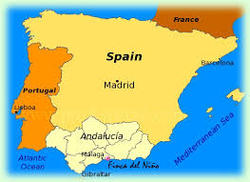 Sherry has been around for centuries and is considered one of the oldest wines in the world. Authentic sherry can only come from the southwest area of Spain, in Andalucía which is recognized by the DO (denomination de origin). There are three main towns here that form a triangle called the “Sherry Triangle”. It is from within this triangle of Jerez, El Puerto de Santa Maria and Sanlúcar de Barrameda that sherry is made. The grapes used for making sherry are Palomino, Muscatel and Pedro Ximenez. The soil, which is chalk and limestone based, the winds, humidity and seasonal changes in this area all contribute to giving sherry its unique characteristics. Sherry is known for its aromatic, salty and nutty profile and runs from dry to sweet, although the majority of sherry produced is dry. The color of sherry ranges from light straw to dark brown. The photo below was taken from a sherry seminar that I attended last year and represents a wide range of sherry colors. All sherry is aged for a minimum of three years and aged in old sherry casks using the Solera system. The Solera system is an aging process that uses new batches of sherry mixed with older ones in a tiered or pyramid structure. The bottom tier is the solera, the eldest sherry, which never entirely leave the system. The rows above contain the younger sherries (criadera). Once a portion of the wine is extracted from the solera, it is replaced with the same amount of wine from the first criadera and so on, creating a unique complexity and personality in the wine. Because sherry is a blend of different vintages it is impossible to give an exact age of a wine that has been aged in a solera. So it is possible that one could be drinking a sherry that might contain anywhere from 3 to 100 vintages! There are several types of sherry available. Here is a quick rundown on how they differ. Fino de Jerez is the youngest (usually 3-5 years old) and the driest of sherries. They age under a layer of flor (yeast). This layer of flor protects the wine from being oxidized and it also consumes all the sugar in the wine, creating a dry sherry. Fino only comes from Jerez and El Puerto de Santa Maria. Manzanilla is another dry sherry that is just like Fino, except that Manzanilla comes only from the coastal town of Sanlúcar. Both Fino and Manzanilla have more wine salinity than the other styles. They will complement fish and shellfish. Amontillado is an aged Fino or Manzanilla. Once the layer of flor fades the wine begins to oxidize and takes on a new character. It can be fortified up to 18%. The color is darker and it is less briny, but nuttier and richer on the palate. These wines pair well with white meat and game. Palo Cortado is an interesting sherry that begins as a Fino or Manzanilla but for no known reason it unexpectedly loses its layer of flor too soon. Once the flor dies, the wine takes on oxygen and requires further fortification. In other words, it does “its own thing”. This wine has richness but is crisp as well. Oloroso (‘scented’ in Spanish) intentionally never develops flor. Aging through oxidation of up to 40+ years produces a full-bodied, aromatic, dark and rich wine. Oloroso contains the most amount of alcohol in a sherry with levels of 18% to 20%. This is a great wine for hearty entrees, meats and stews. Pedro Ximenez (PX) is an intensely sweet wine and the sweetest of the sherries. The grapes are dried in the sun allowing the juices to concentrate prior to pressing. This is a rich wine that oozes raisins, nuts and fig. Cream Sherry is usually a blend of Oloroso, PX or Moscatel but can come in a variety of styles. This is a semi-sweet wine that is aromatic, dark in color with classic notes of nuts and caramel. Here are just a few of the sherries that I tasted the other day. When it comes to pairing sherry with food, there is a saying of which I have no idea of its origin: If it swims… drink with Fino or Manzanilla) If it flies… drink with Amontillado If it walks… drink with Oloroso Sherry is versatile and there is a style for everyone. Pair it with food, drink it as you would a favorite whiskey or explore mixing it in a cocktail. Sherry is making a strong comeback and I think it’s about time! Cheers! Penina To leave a comment or if you have an inquiry, please contact me at [email protected]
If you follow my blog, you will recall that I have been sorting and organizing my “spirits” cabinet of late. And, I have been finding some interesting bottles. Most recently I stumbled upon a bottle of Williams & Humbert Dry Sack Sherry. 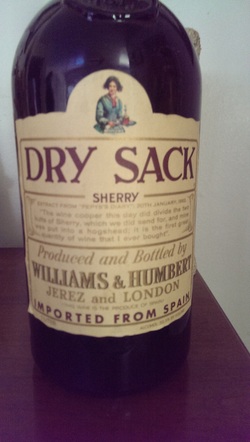 Dry Sack has been produced since 1906. Williams & Humbert was founded in 1877 by two British brothers-in-law. This particular bottle must be at least 30 years old because of the label and shape, which is not used anymore! I opened it up and poured a little into a glass. The color was amber and the aroma of nuts with a touch of citrus peel was heavenly. The aroma of nuts carried over to my taste buds along with a hint of toffee. It was slightly sweet with a dry finish.  I love to cook with sherry. I find it enhances certain soups and sautéed dishes. Of course, it is lovely to have straight up or over ice as well. Until next time…
Cheers! Penina |
Categories
All
|

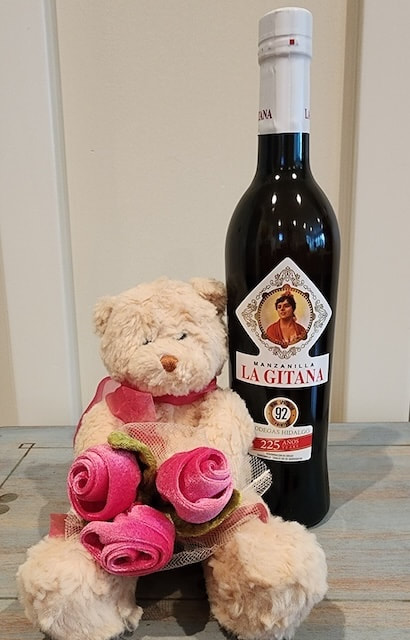
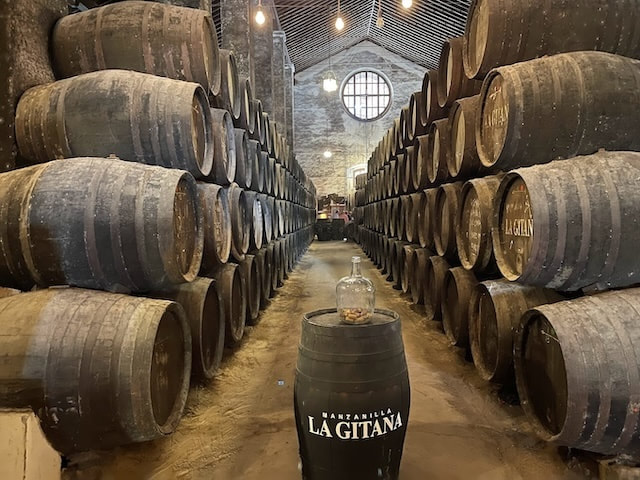
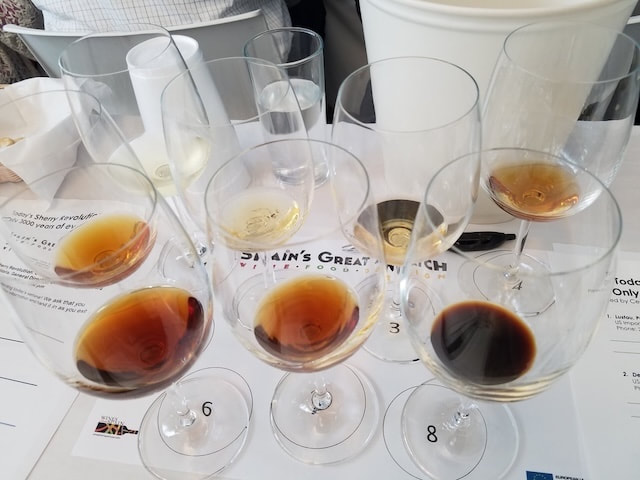
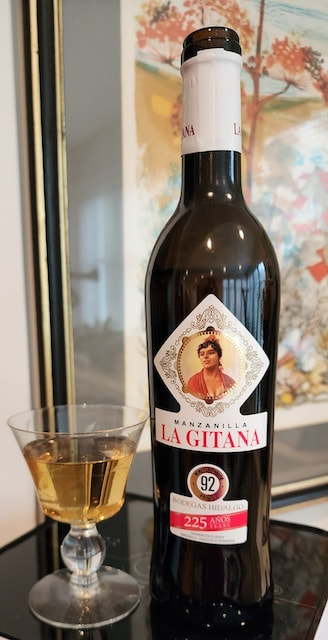
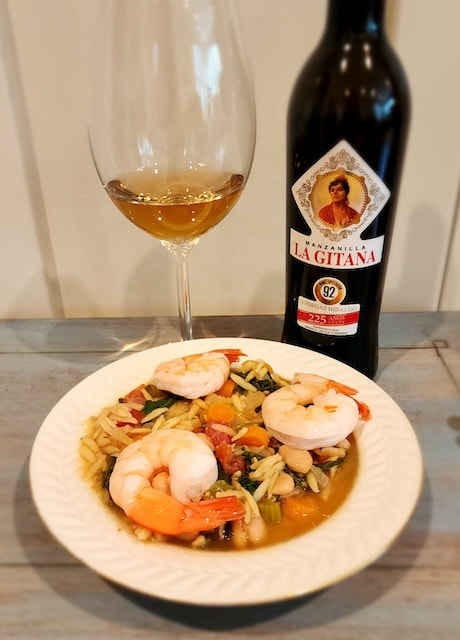


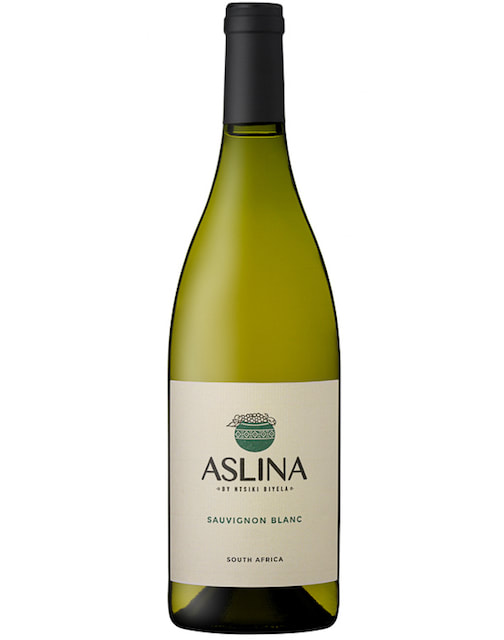
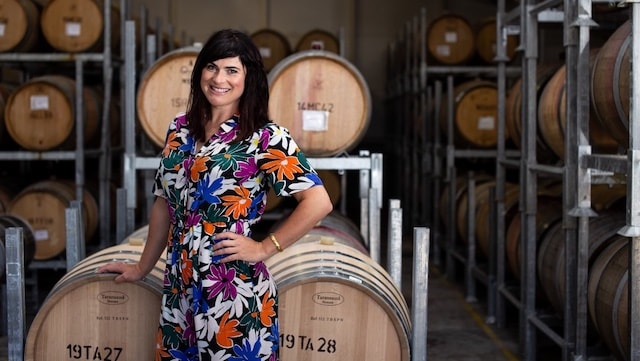
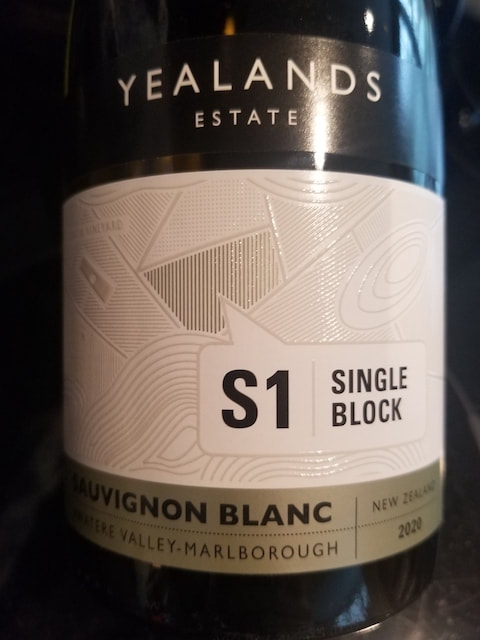

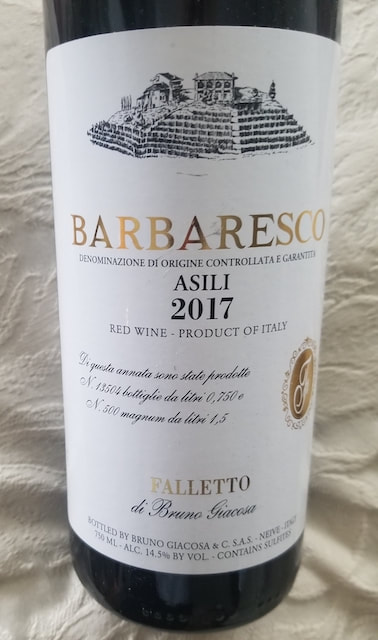

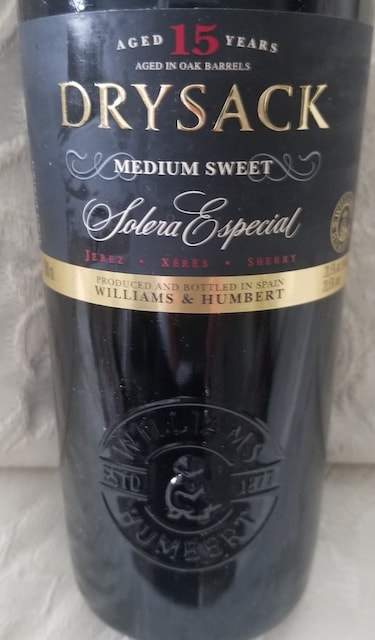

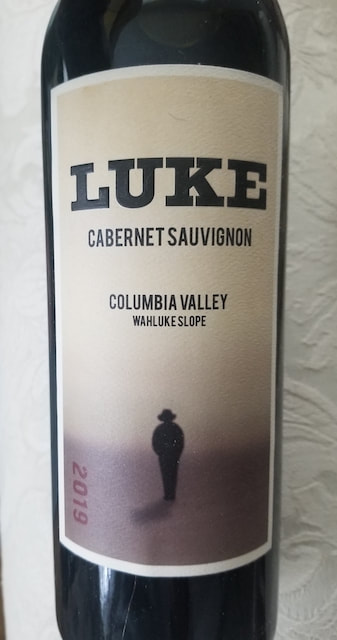

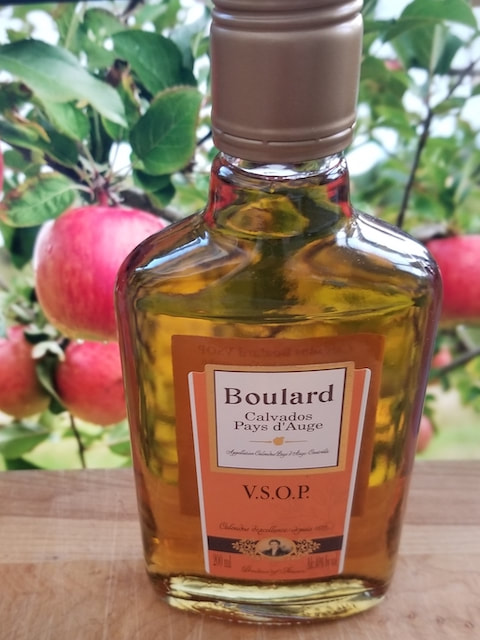
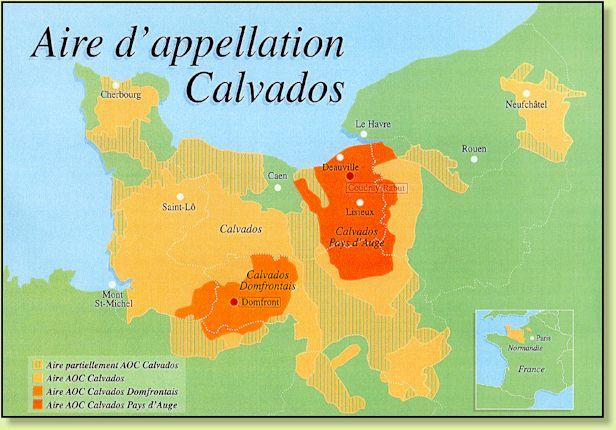
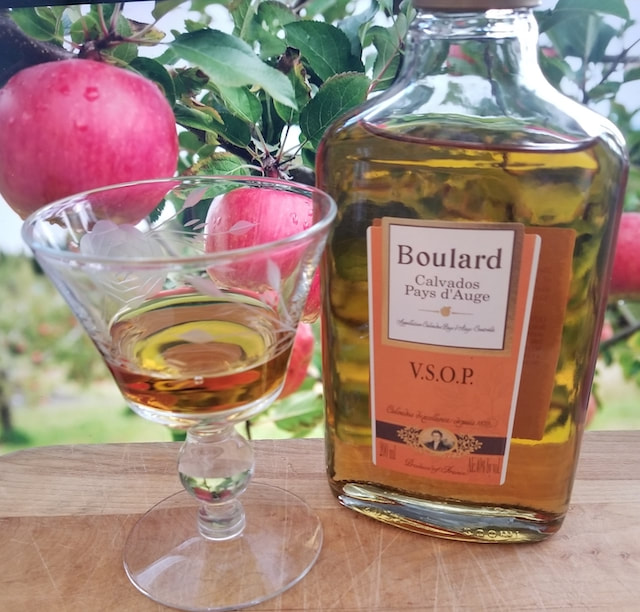
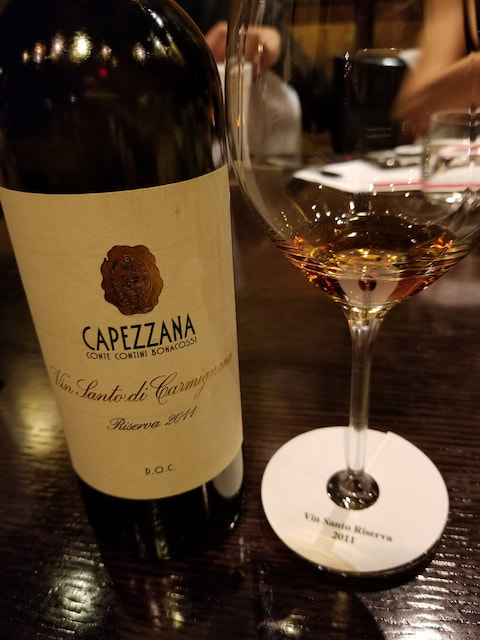
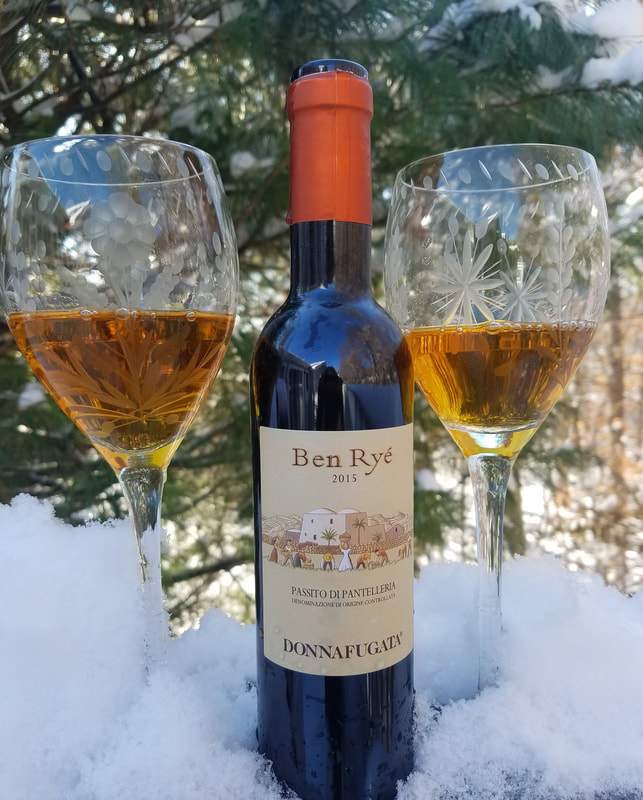
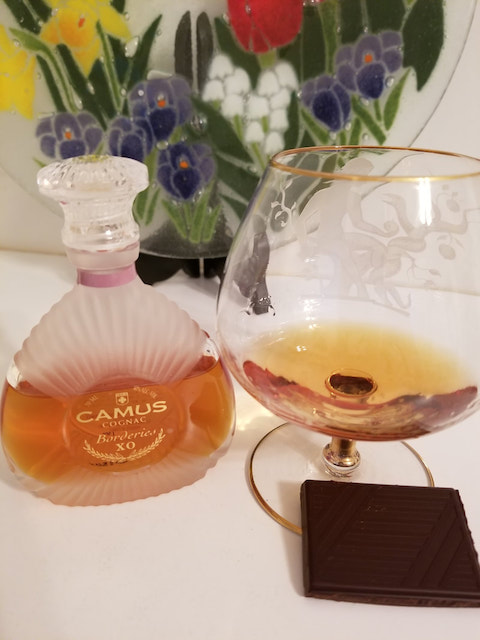
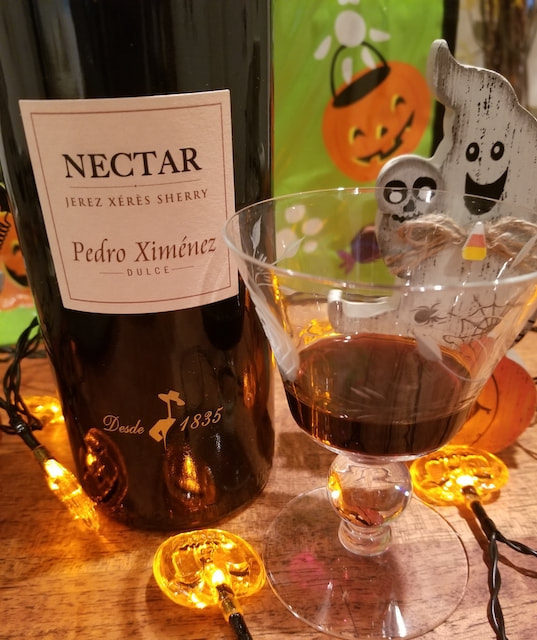
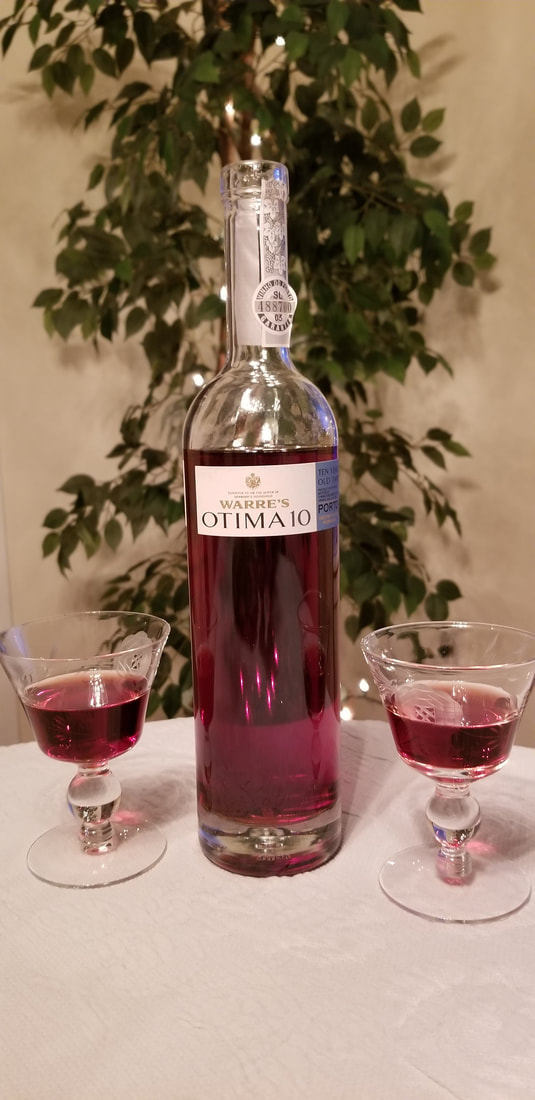
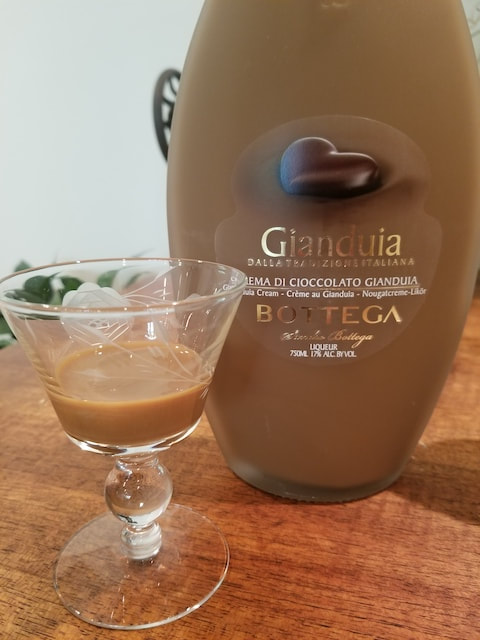
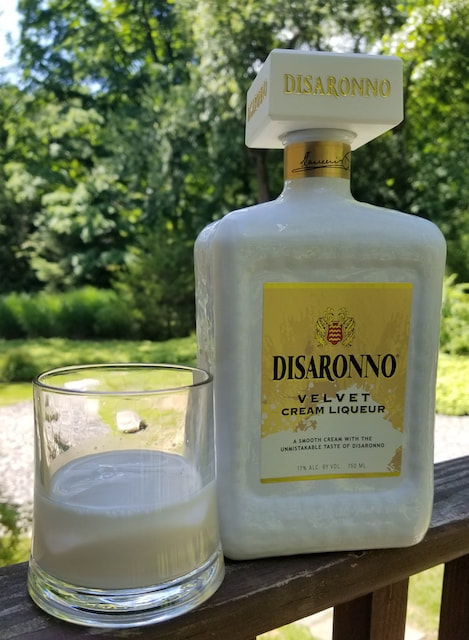

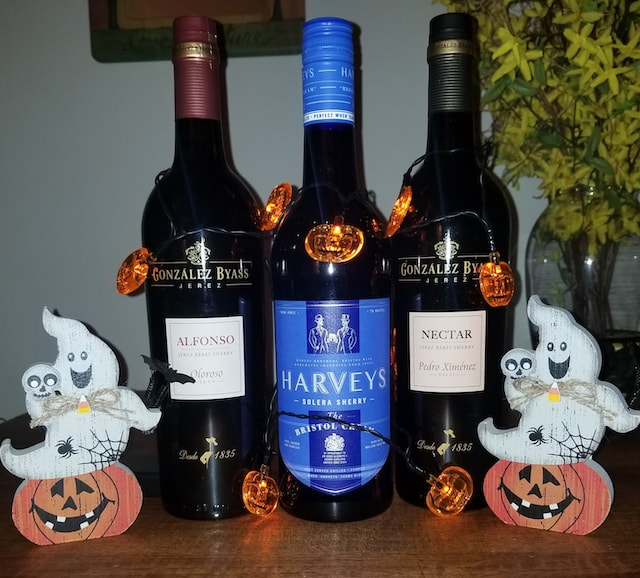
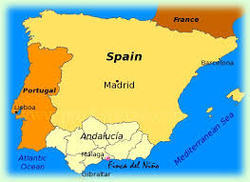
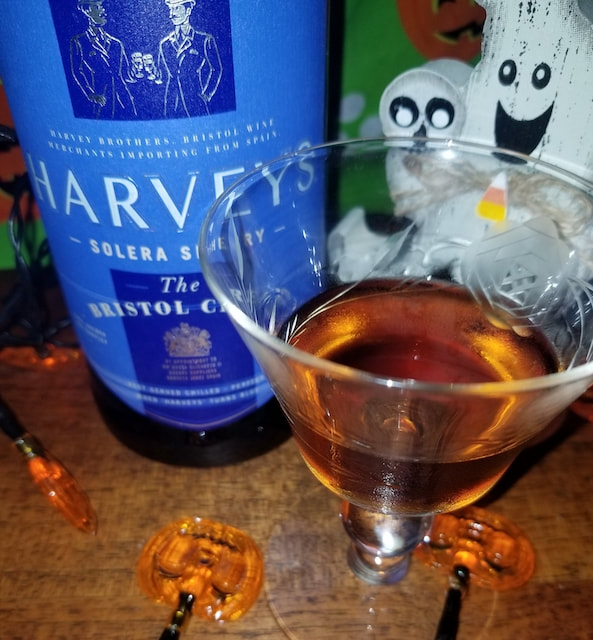
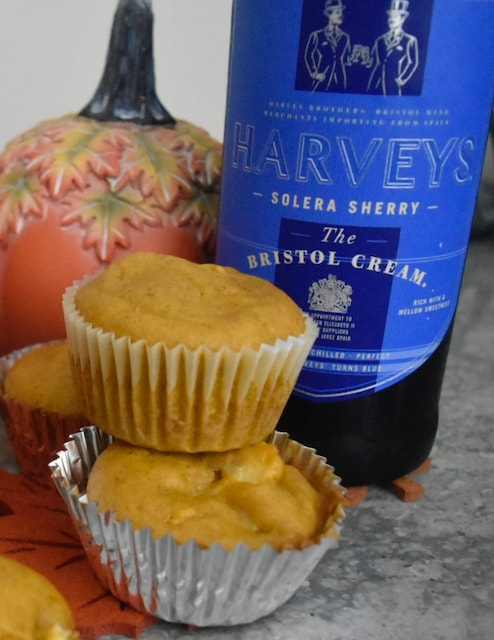
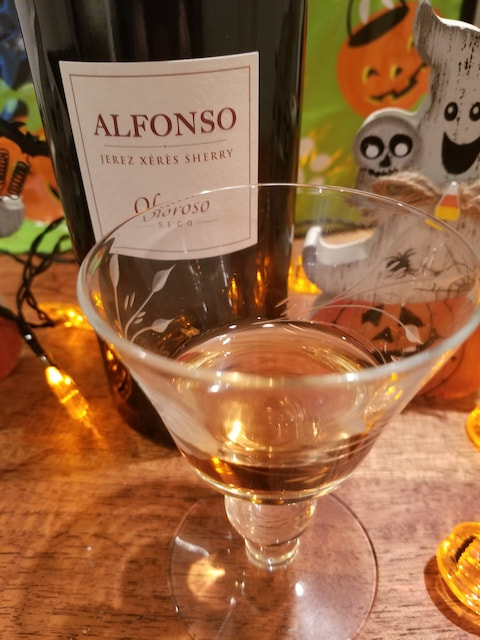
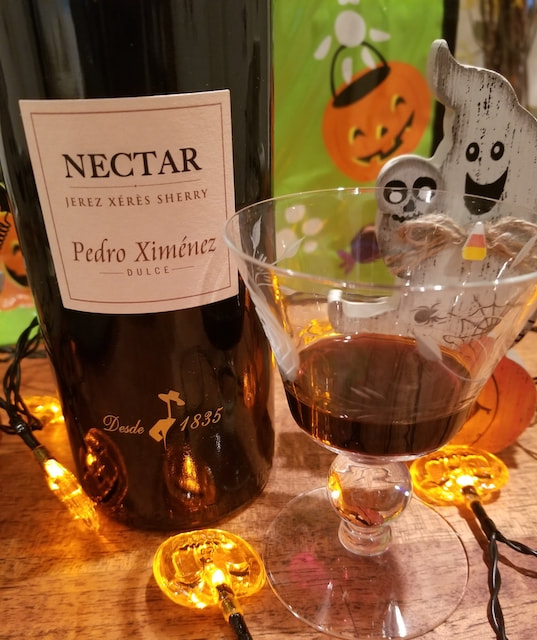
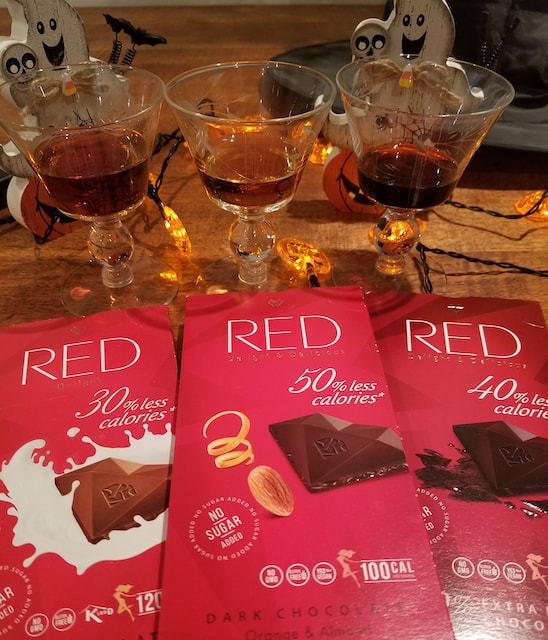
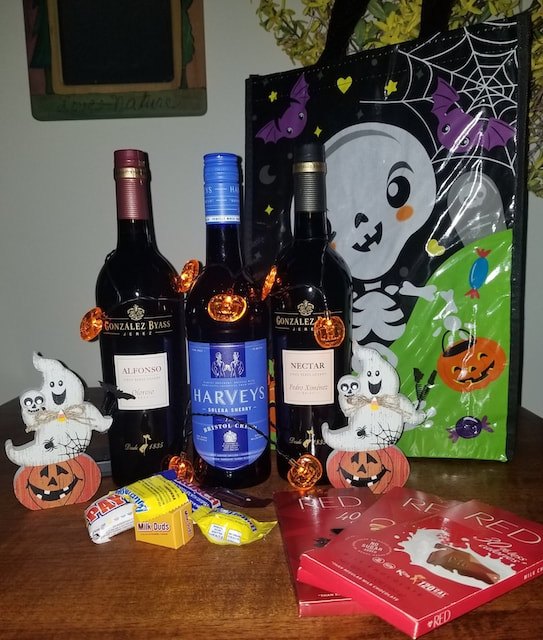

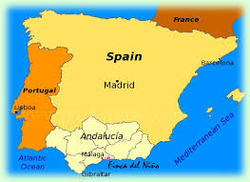
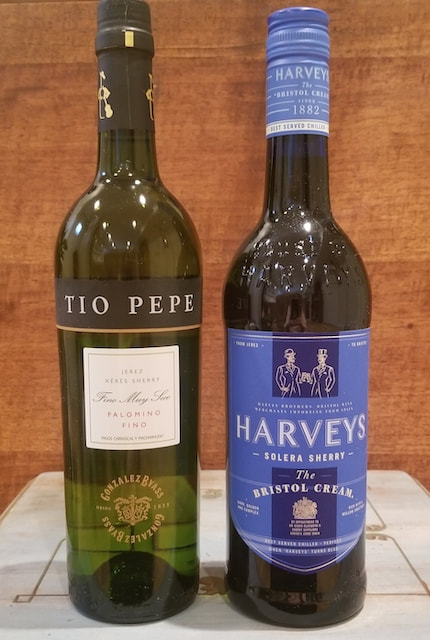
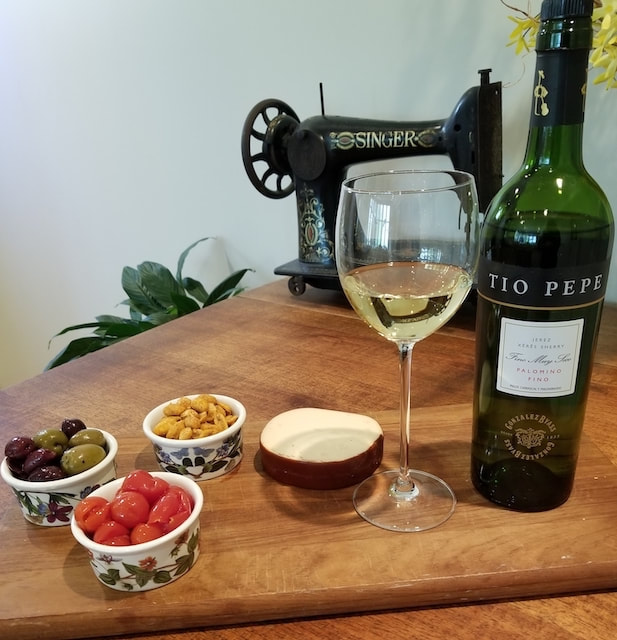
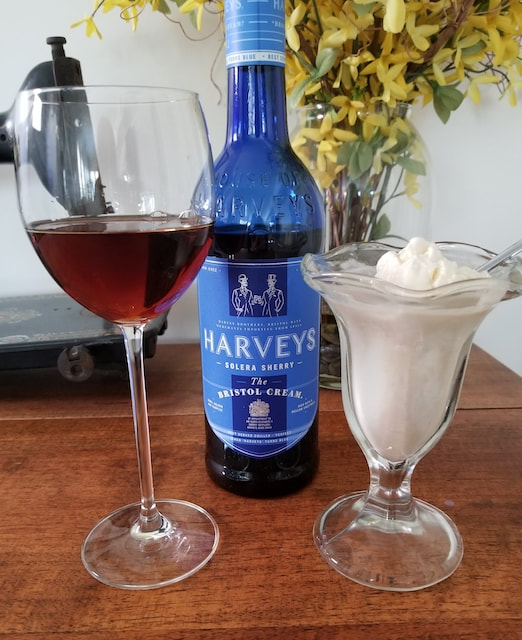
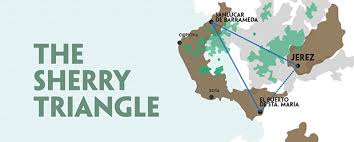
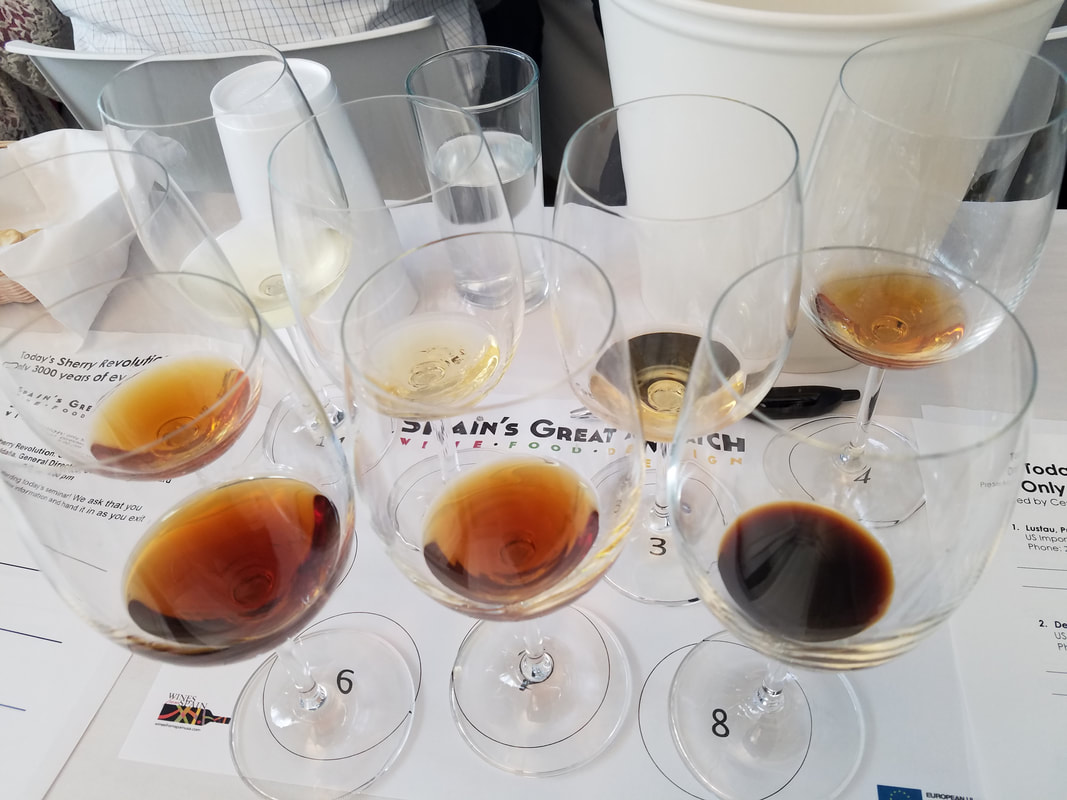
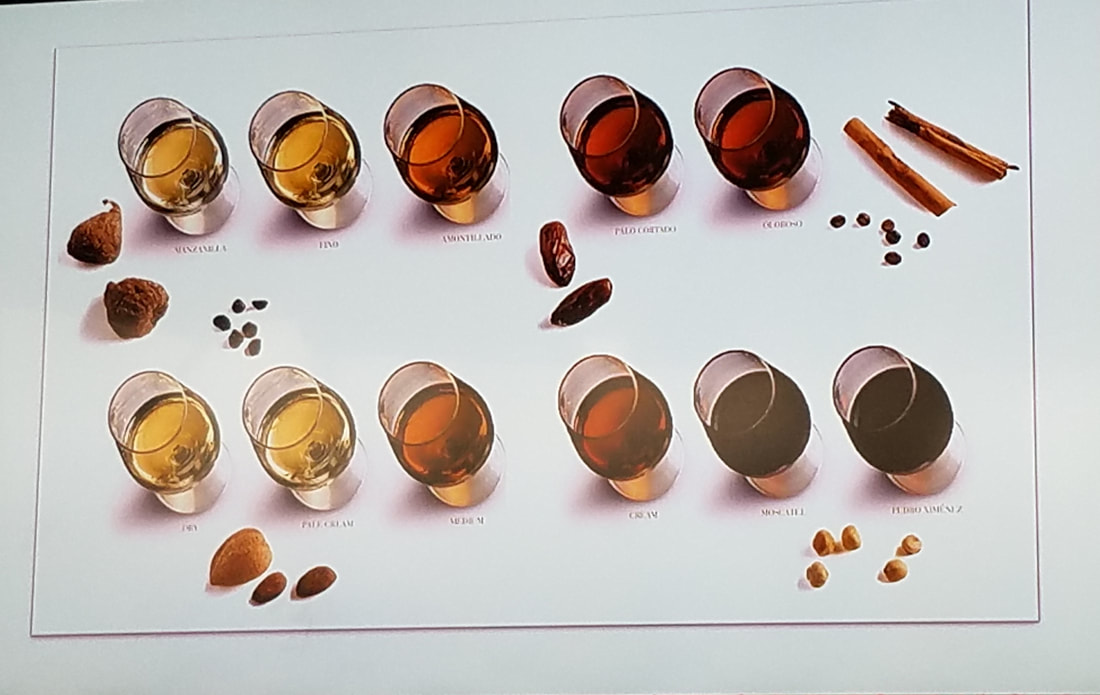
 RSS Feed
RSS Feed